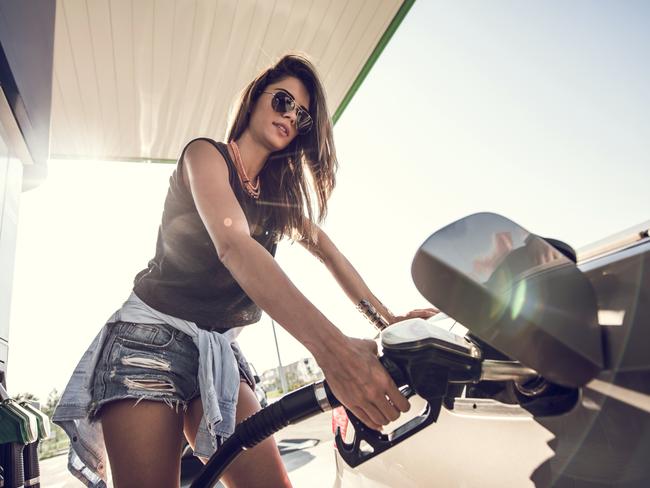How Brisbane became the most expensive capital city for petrol
IT USED to be Darwin that had the highest petrol prices among Australian capital cities, but a confluence of factors has helped Brisbane “win" the title.
CM Insight
Don't miss out on the headlines from CM Insight. Followed categories will be added to My News.
THERE was a time when Brisbane wasn’t the hardest-hit capital when it comes to fuel prices; until 2014 Darwin was home to Australia’s most ripped-off motorists.
But a combination of factors – including strong political will from the Northern Territory Government and Puma Energy buying out a large chunk of Queensland’s independent petrol stations – helped “win” Brisbane the title.
It’s not to say Brisbane motorists haven’t always paid more than the likes of Sydney and Melbourne, because competition from independent retailers was never as strong as the bigger cities. But it wasn’t the worst in the country.
An extensive investigation by the Australian Competition and Consumer Commission late last year definitively gave the one simple reason local motorists paid more – greedy retailers slugging motorists with higher retail margins.
A more recent ACCC report from February again proved that Brisbane petrol stations enjoyed the highest profits of all capital cities.
The Darwin experience
In 2014, then chief minister Adam Giles declared he had enough of fuel companies giving Territorians the “rough end of the pineapple”.
For years Darwinites had paid more for petrol than anywhere else, accepting it as being subject to the “Darwin tax” – it costs more because it costs more to get it to you. Except the fuel was coming from Singapore and for once that gave Darwin the advantage on distance.
A by-election candidate found a piece of legislation he believed would grant powers to the government to intervene on fuel pricing. So in September 2014, Giles wrote to the fuel companies operating in the Territory and invited them to explain their prices to Territorians.
Fueltrac’s Geoff Trotter said the combined effort of government, the Territory’s motoring body and media to hold the companies to account resulted in an immediate 10¢ price drop from United.
“The companies had to front the cameras, United cracked and dropped their prices 10¢ per litre, then Coles, Woolworths, Shell and BP they all had to follow,” he said.
Darwin’s unleaded petrol price is $1.499 compared to Brisbane’s $1.569.

Where to for Queensland
Queensland tried a similar approach in 2016, with then main roads and energy minister Mark Bailey hosting a government-ordered roundtable of industry and consumer representatives to examine why Brisbane drivers had for years been paying 3¢ a litre more than Sydney and Melbourne motorists.
The major difference was there was no public scrutiny during the process and no strong indication from the Government that it was prepared to enact legislation or impose penalties of any type on the oil companies, and nothing really happened as a result of it.
Laws were introduced to make price signage less confusing but the fact remains Queenslanders are still paying too much.
The RACQ and the Opposition are pushing for real-time fuel monitoring to be introduced in Queensland as a matter of urgency and point to the NT and NSW as examples of where it has worked.
Premier Annastacia Palaszczuk early this year refused to introduce the legislation that would force fuel companies to publish changes in their fuel prices to help consumers find the best price.
A few weeks later she said “a conversation” had started with the RACQ about real-time fuel monitoring.
Yesterday a Government spokesman said: “We need to ensure that any further requirements do not add any red tape that would inadvertently add extra cost to the price of petrol and disadvantage motorists and smaller operators.”
The Government isn’t the only one dubious of how successful real-time fuel monitoring is.
Mr Trotter said there were many existing petrol price comparison sites and apps already in place with private companies, and their existence had made no difference to the high prices and high margins identified by the ACCC reports to date. “Such sites may actually facilitate the fundamental problem of lack of real competition by alerting all service stations to what each other is charging,” he said.
Australasian Convenience and Petroleum Marketers Association CEO Mark McKenzie said he was yet to see any data that actually proved the measure lowered petrol prices.
The only thing everyone can agree on that will work to put more money back in the pockets of struggling families is competition: independent service stations entering the market.
A question was sent to the Premier’s office yesterday asking how the Government was encouraging independent retailers into the market.
It chose to ignore the question.


